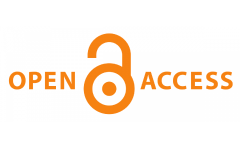
Aasef Shaikh
Case Medical Center, School of Medicine, Case Western Reserve University
Cleveland, United States
Chief Editor
Dystonia
Dystonia aims to be the leading journal in the field by publishing open access premier research on all basic, clinical and translational aspects of the dystonias. Contributions that open new research avenues and address longstanding questions are particularly encouraged. The journal will consider studies involving clinical or experimental human research, animal models, computational or theoretical neuroscience, and in vitro approaches. Case reports will be considered if rigorous studies of individual patients enhance the overall understanding of dystonia pathophysiology or its treatment. Methods papers focusing on a novel approach that adds significant conceptual knowledge to experimental techniques will be encouraged.
Dystonia's advisory board primarily provides high-level strategic guidance and enhances the journal's prestige, rather than being involved in day-to-day content review. Comprised of distinguished scholars, their main functions include advising on the journal's long-term vision, scope, and future development, lending academic credibility to attract top authors, and leveraging their extensive networks to promote the journal and its impact within the wider academic community.
Advisory Board
Alberto Albanese, Department of Neurology, Humanitas Research Hospital, Rozzano, Milano, Italy
Xandra Breakefield, Massachusetts General Hospital, Boston, Massachusetts, United States
Cynthia Comella, Rush University, Chicago, Illinois, United States
Mahlon DeLong, Emory University, Atlanta, Georgia, United States
Stanley Fahn, Columbia University, New York, New York, United States
Mark Hallett, National Institute of Neurological Disorders and Stroke, Bethesda, Maryland, United States
Joseph Jankovic, Baylor College of Medicine, Houston, Texas, United States
H. A. Jinnah, Emory University, Atlanta, Georgia, United States
Kamran Khodakhah, Albert Einstein College of Medicine, New York, New York, United States
Anthony Lang, University of Toronto, Toronto, Ontario, Canada
Joel Perlmutter, Washington University, Saint Louis, Missouri, United States
David Standaert, University of Alabama, Birmingham, Alabama, United States
Jan Teller, Scientific Advisors International, Niemcz, Poland and Dystonia Medical Research Foundation, Chicago, Illinois, United States
Marie Vidailhet, Pitié-Salpêtrière University Hospital, Paris, France
Jerrold Vitek, University of Minnesota, Minneapolis, Minnesota, United States
Editorial Board
The Editorial Board includes the two Chief Editors and seven Associate Editors, who guide the journal’s vision and ensure the quality and integrity of its publications. This involves setting the scope and vision, overseeing content through processes like peer review, ensuring adherence to high standards of accuracy and ethics, and making crucial publication decisions. Board members also actively acquire high-quality submissions, leverage their expertise and networks to promote the publication, and advise the Chief Editors on content and policy, ultimately safeguarding its reputation and relevance.
The Editorial Board is supported by a dedicated community of expert reviewers who evaluate submissions for scientific rigor, accuracy, and validity, ensuring the research provides robust conclusions and is supported by sufficient data.
The complete Editorial Board and list of reviewers can be found here.
Short name
Dystonia
Abbreviation
dyst
Electronic ISSN
2813-2106
Indexed in
1Science, Bielefeld Academic Search Engine (BASE), Chinese Academy of Sciences GoOA, CNKI Scholar, CrossRef, DeepGreen, Dimensions, DOAJ, EBSCO, Figshare, Google Scholar, Japanese Science and Technology Agency (JST), Jisc, MyScienceWork, OpenAIRE, Scite, Semantic Scholar, Web of Science Emerging Sources Citation Index (ESCI) , Scopus

Dystonia provides online free gold open access to the journal and all of its research publications.
Open Access funder and institutional mandates: Dystonia is fully compliant with open access mandates, by publishing its articles under the Creative Commons Attribution licence (CC-BY). Funder mandates such as those by the Wellcome Trust (UK), National Institutes of Health (USA) and the Australian Research Council (Australia) are fully compatible with publishing in Dystonia. Authors retain copyright of their work and can deposit their publication in any repository. The work can be freely shared and adapted provided that appropriate credit is given and any changes specified.
If the research contained in your published Dystonia article was supported by the National Institutes of Health (NIH), another PMC designated funder, or a member of the Europe PMC funder group, you may self-deposit the article into PubMed Central after publication. Please see PubMed Central to determine your eligibility and for more information on how to begin this process.
Under the Conditions for Website Use and the General Conditions for Authors, authors of articles published in Dystonia retain copyright on their articles, except for any third-party images and other materials added by Dystonia, which are subject to copyright of their respective owners. Authors are therefore free to disseminate and re-publish their articles, subject to any requirements of third-party copyright owners and subject to the original publication being fully cited. Visitors may also download and forward articles subject to the citation requirements and subject to any fees Dystonia publisher, Frontiers, may charge for downloading licenses. The ability to copy, download, forward or otherwise distribute any materials is always subject to any copyright notices displayed. Copyright notices must be displayed prominently and may not be obliterated, deleted or hidden, totally or partially.
Each Dystonia article strives for the highest quality, thanks to genuinely collaborative interactions between authors, editors and reviewers. Dystonia encourages authors to consult the instructions for authors guidelines prior to submission.
Avenue du Tribunal Fédéral 34
CH – 1005 Lausanne
Switzerland
For all queries regarding manuscripts in review, potential conflicts of interest, special issues, editorial board applications and any other questions, please contact dystonia.office@FrontiersPartnerships.org
For technical issues, please visit our HelpDesk, or contact our IT HelpDesk team at support@FrontiersPartnerships.org